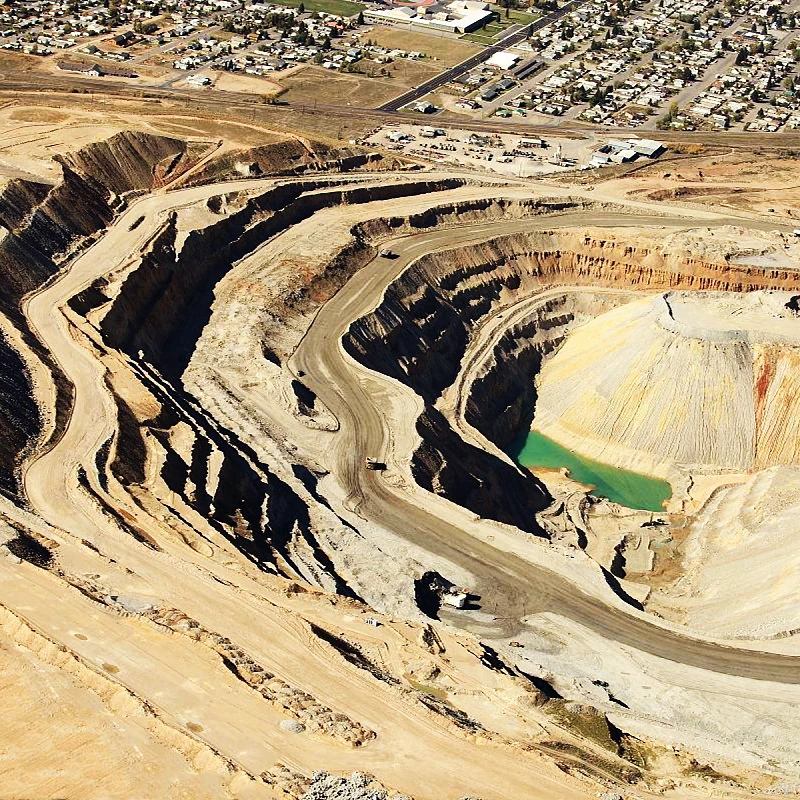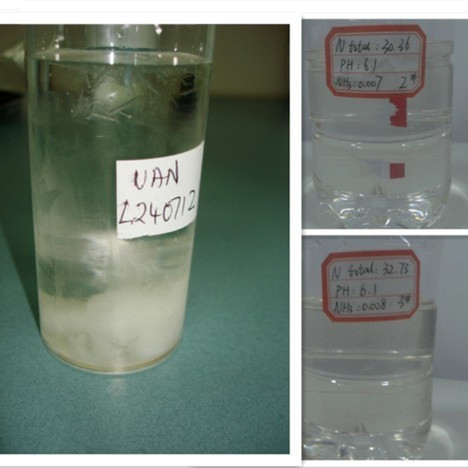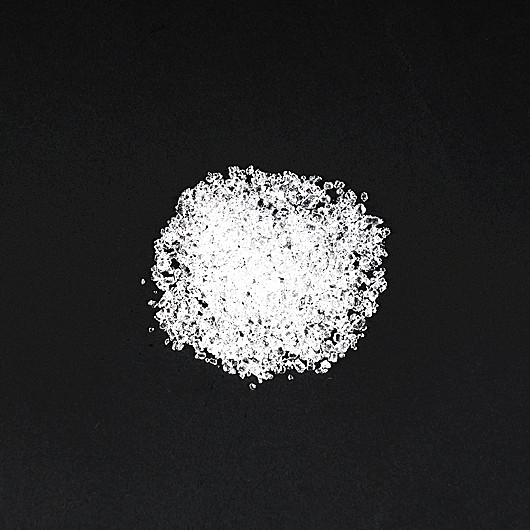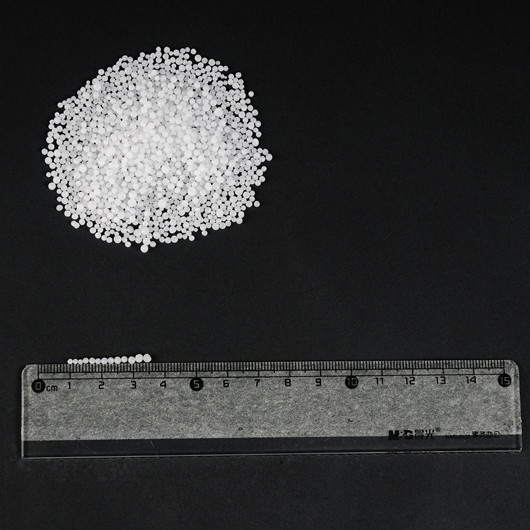Since the large-scale production of ammonium nitrate at the beginning of the 20th century, many major and catastrophic safety accidents have occurred, such as the explosion of Auberger plant in Germany in 1921, the explosion of Texas port in 1947, and the explosion of Toulouse chemical plant in France in 2001.

Why did ammonium nitrate, once a star fertilizer widely used in agriculture, become the culprit of the tragic explosion?
Ammonium nitrate is a volatile chemical
The chemical formula of ammonium nitrate is NH4NO3. Because of its high nitrogen content (second only to liquid ammonia and urea), it is often used to make fertilizer. It is a colorless and odorless crystal, easily soluble in water, easy to absorb moisture and caking. Pure ammonium nitrate is stable at room temperature, but it will decompose when heated. The higher the temperature is, the faster the reaction is. When the temperature reaches 400 ℃, the decomposition reaction of ammonium nitrate is very violent, which will explode and produce nitrogen and toxic nitrogen dioxide.
In the middle of 17th century, German scientists made ammonium nitrate for the first time. Of course, they didn't know at this time that ammonium nitrate could be used as a chemical fertilizer to increase crop yield. At the end of the 19th century, Europeans produced ammonium nitrate by the double decomposition reaction of ammonium sulfate and Chilean nitre. In the 20th century, with the rise of synthetic ammonia industry, ammonium nitrate production has obtained rich raw materials, and its application has been developed rapidly. Since the Second World War, ammonium nitrate has been widely used as nitrogen fertilizer due to its low manufacturing cost.
At the same time, ammonium nitrate contains two kinds of nitrogen sources, ammonium nitrogen and nitrate nitrogen, which are easy to be absorbed by crops, and there is no residue in the soil, so that the crops are luxuriant and the yield is greatly improved. Therefore, it is widely used as "fertilizer star" by the majority of farmers.
If ammonium nitrate only plays the role of "fertilizer star", it would be a blessing to benefit all mankind. However, ammonium nitrate is easy to dissolve in water and has strong hygroscopicity, especially the "bad temper" of combustion supporting and explosion, which makes many countries have to strictly restrict and manage the production, transportation, storage and use of ammonium nitrate, and some countries even prohibit the direct use of ammonium nitrate as fertilizer. At the same time, scientists found that ammonium nitrate can also be used as a kind of powerful explosive. As a result, ammonium nitrate became an essential material for explosive preparation during World War II. Even today in the 21st century, ammonium nitrate is often used as the main component of explosive mixtures used in mining, Quarrying and civil construction.
New ammonium nitrate
Nitrogen is an important nutrient of crops, and ammonium nitrate as the main raw material plays an important role in agricultural production. However, in order to reduce the occurrence of explosion, it is an effective way to modify ammonium nitrate and vigorously develop safe and efficient compound fertilizer with ammonium nitrate as nitrogen source in the development of agricultural fertilizer industry, such as ammonium phosphate nitrate, ammonium phosphate potassium nitrate, ammonium calcium nitrate and so on.
Take calcium ammonium nitrate as an example, this is a new type of high-end nitrogen fertilizer, its hygroscopicity is lower than that of ordinary ammonium nitrate, it is less prone to fire in storage and transportation, and it is safer than ammonium nitrate. The nitrogen content of calcium ammonium nitrate is lower than that of ammonium nitrate, but it increases the calcium element needed for crop growth, and the comprehensive fertilizer efficiency is higher than that of ammonium nitrate. As a substitute of ammonium nitrate, calcium ammonium nitrate has broad development prospects.As a chemical fertilizer, ammonium nitrate has increased grain yield and improved human survival. When we dialectically look at the multifaceted nature of ammonium nitrate, we will also find that although it has indeed played an ignominious role in many explosion accidents, as an explosive, it has also made due contributions to the industrial and military development with its strong strength. From ordinary rock blasting to underwater blasting, from civil explosives to military explosives, ammonium nitrate explosives are desperate.
Because ammonium nitrate is easily soluble in water, serious hygroscopicity and caking are the main defects of ammonium nitrate explosive. Therefore, scientists are committed to the technical research of ammonium nitrate explosive, and developed modified ammonium nitrate explosive, expanded ammonium nitrate explosive and powdery emulsion ammonium nitrate explosive, which effectively improves the explosion performance and application range of ammonium nitrate explosive. For example, in order to reduce the hygroscopicity of ammonium nitrate, surfactants such as octadecylamine salt and sodium dodecylamine sulfonate can be added to ammonium nitrate; in order to reduce its caking, wood powder, cottonseed cake powder, hemp powder, bark powder can be added. For another example, the aqueous solution of ammonium nitrate, mineral oil and other combustible agents are combined to form an oil phase solution, which is emulsified to form an emulsion system of water in oil, and then Powdered Emulsion ammonium nitrate explosive is made by powdering process. This kind of powdery emulsion explosive has good water resistance and storage stability, high detonation sensitivity, excellent explosion performance and water resistance, no toxicity to human body, no pollution to environment, low cost and advanced technology.
In addition, solid ammonium nitrate can also be made into liquid ammonium nitrate, which can be directly used as explosive. In this way, crystallization, packaging, transportation and other processes are canceled in the production process, the production links are greatly reduced, the explosiveness is greatly reduced, and the safety is greatly improved. The process meets the requirements of national policies and the needs of industry optimization production. The above advantages make the liquid ammonium nitrate directly used in industrial explosive production process become one of the mainstream of explosive industry development in the future.
As oxidant for Aerospace
In addition to playing two important roles of chemical fertilizer and industrial explosive, ammonium nitrate, as an oxidant of solid rocket propellant, has also been widely concerned in the world.
Solid propellant is the power source material of solid rocket motor. It is a kind of energetic material which has been specially processed and contains oxidant and combustion agent. It can self-sustaining combustion and produce a large amount of hot gas without the participation of environmental oxygen. It plays an important role in the development of missile and aerospace technology.
Ammonium perchlorate (nh4clo4) has become the main oxidant of most modern solid propellants because of its high performance and fast burning rate. However, the chlorinated compounds produced during the combustion of ammonium perchlorate make the rocket have strong characteristic signals and easy to be monitored, which also leads to environmental problems. For example, one of the main products of combustion of ammonium perchlorate based propellant is hydrogen chloride (HCl), which is mixed with water vapor in the air to form hydrochloric acid, which produces smoke and is highly toxic. According to statistics, when the space shuttle is launched, each solid rocket booster will produce more than 100 tons of hydrogen chloride. In addition, another threat of ammonium perchlorate based propellants is the destruction of stratospheric ozone layer by chlorine compounds released from their combustion.
In order to make space technology serve human beings better and reduce environmental pollution and damage as much as possible, the voice of developing "clean" propellants is rising. More and more attention has been paid to the environment-friendly and low characteristic signal chlorine free propellants, and ammonium nitrate, which meets these requirements, has become an ideal material to replace ammonium perchlorate as the oxidant of solid propellants.
Ammonium nitrate oxidizer has the advantages of wide source, low cost, low flame temperature, no chlorine or other halogen in the molecule, no hydrogen chloride after combustion, insensitive to temperature and impact, and good mechanical properties in a wide temperature range. Therefore, ammonium nitrate oxidizer has attracted much attention in the application of low characteristic signal and insensitive propellant. However, as an oxidant of solid propellants, ammonium nitrate also has many disadvantages, such as low energy, slow burning rate, strong hygroscopicity, volume change easily caused by phase transformation at room temperature, etc.
In order to make space technology serve human beings better and reduce environmental pollution and damage as much as possible, the voice of developing "clean" propellants is rising. More and more attention has been paid to the environment-friendly and low characteristic signal chlorine free propellants, and ammonium nitrate, which meets these requirements, has become an ideal material to replace ammonium perchlorate as the oxidant of solid propellants.
Ammonium nitrate oxidizer has the advantages of wide source, low cost, low flame temperature, no chlorine or other halogen in the molecule, no hydrogen chloride after combustion, insensitive to temperature and impact, and good mechanical properties in a wide temperature range. Therefore, ammonium nitrate oxidizer has attracted much attention in the application of low characteristic signal and insensitive propellant. However, as an oxidant of solid propellants, ammonium nitrate also has many disadvantages, such as low energy, slow burning rate, strong hygroscopicity, volume change easily caused by phase transformation at room temperature, etc.
After unremitting efforts, scientists introduced additives to modify ammonium nitrate to overcome its shortcomings. For example, energetic binders and plasticizers are introduced into the propellant system to make up for the low energy of ammonium nitrate; burning rate catalysts such as iron oxide (Fe2O3), chromium oxide (Cr2O3), manganese dioxide (MnO2), potassium dichromate (K2Cr2O7) are added to improve the burning rate of ammonium nitrate based propellant; surfactants or polymers such as polystyrene are added to improve the burning rate of ammonium nitrate The phase transformation of ammonium nitrate was solved by adding phase stabilizers such as KNO3, Cuo, Ni2O3 and ZnO. In addition, adding a certain proportion of ammonium perchlorate to ammonium nitrate can also make ammonium nitrate achieve phase stability, and increase the specific impulse and burning rate of ammonium nitrate based propellant.
Ammonium nitrate is an angel for the improvement of the quality of human life and the development of the aerospace industry, but it is also a devil for us to make troubles from time to time and leave painful memories. Therefore, human beings should understand and control the dangerous substances in nature more scientifically and rationally, and let them get along with us more harmoniously.
Why did ammonium nitrate, once a star fertilizer widely used in agriculture, become the culprit of the tragic explosion?
Ammonium nitrate is a volatile chemical
The chemical formula of ammonium nitrate is NH4NO3. Because of its high nitrogen content (second only to liquid ammonia and urea), it is often used to make fertilizer. It is a colorless and odorless crystal, easily soluble in water, easy to absorb moisture and caking. Pure ammonium nitrate is stable at room temperature, but it will decompose when heated. The higher the temperature is, the faster the reaction is. When the temperature reaches 400 ℃, the decomposition reaction of ammonium nitrate is very violent, which will explode and produce nitrogen and toxic nitrogen dioxide.



